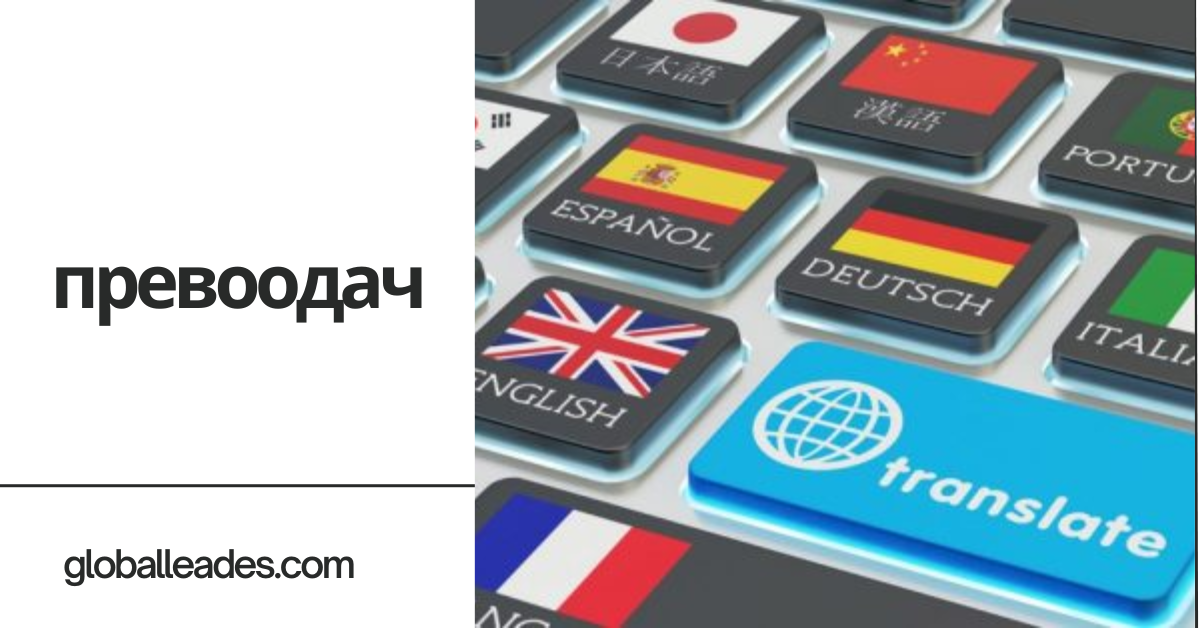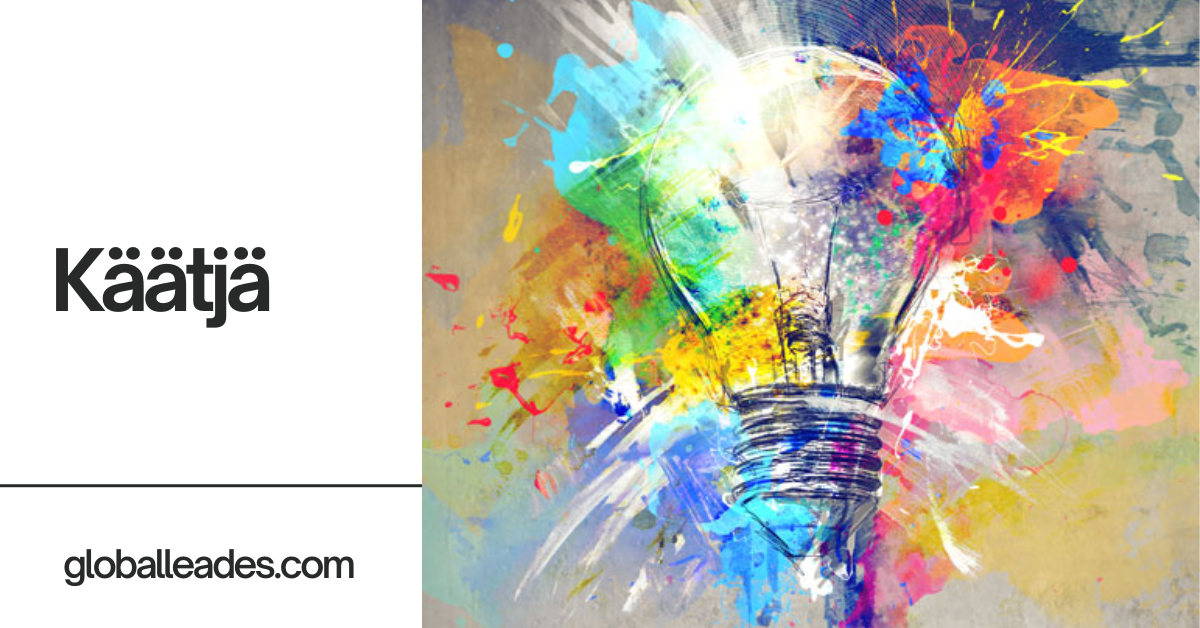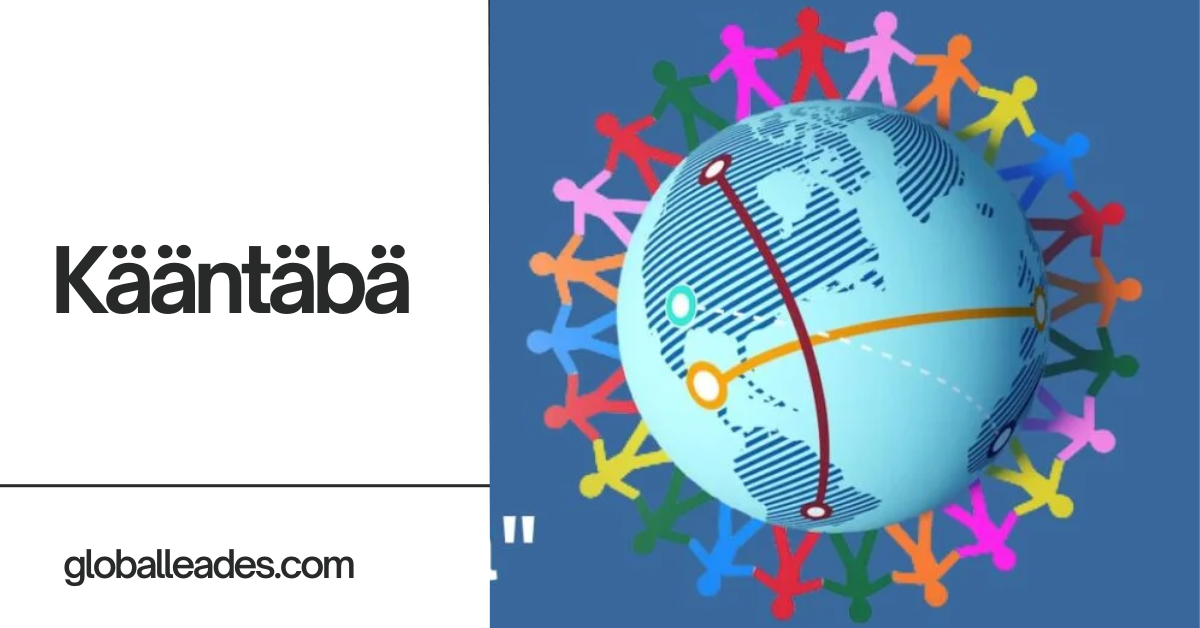In today’s digital era, where the world is at our fingertips, effective communication transcends linguistic barriers. The ability to convey ideas, messages, and emotions across different languages is essential for global connectivity and collaboration.
This comprehensive guide explores the multifaceted world of превоодач (translator), offering invaluable insights into its significance, methodologies, challenges, and future prospects.
Whether you’re a business professional seeking to expand into international markets or a language enthusiast fascinated by the intricacies of translation, this article will equip you with the knowledge and tools to navigate the complex terrain of language mediation.
What is превоодач?
превоодач, or translator, is a facilitator of communication, tasked with the conversion of written or spoken content from one language to another. However, the role of a translator extends far beyond mere linguistic substitution.
A proficient превоодач possesses a deep understanding of both the source and target languages, as well as the cultural nuances that shape communication. They are adept at capturing the essence, tone, and style of the original text while ensuring that the translated version resonates with its intended audience.
From legal documents and technical manuals to literary works and marketing materials, превоодачs play a pivotal role in bridging linguistic divides and fostering cross-cultural understanding.
Understanding the Basics of превоодач
Translation is a nuanced process that requires careful consideration of various factors. Beyond language proficiency, a successful translation hinges on the translator’s ability to grasp the subtleties of context, tone, and cultural nuances.
Each language carries its unique idiosyncrasies, idioms, and cultural references, which must be navigated skillfully to produce accurate and culturally appropriate translations.
Also Read: Käntäjää – Why Translation Matters In 2024
Moreover, the translator must strike a delicate balance between fidelity to the original text and readability in the target language, ensuring that the essence of the message is preserved without sacrificing clarity or coherence.
Historical Significance
The history of translation is a testament to humanity’s enduring quest for knowledge, understanding, and connection.
From the ancient scribes of Mesopotamia who translated cuneiform inscriptions to the medieval scholars of the Islamic Golden Age who preserved and translated Greek philosophical texts, translation has been instrumental in the transmission of ideas and the enrichment of cultural heritage.
The Renaissance witnessed a revival of interest in classical literature, fueled by translations of Greek and Latin works into vernacular languages.
In more recent times, the advent of globalization has led to an unprecedented demand for translation services, as businesses, governments, and individuals seek to navigate an increasingly interconnected world.
The Role of превоодач in Communication
Превоодачs serve as indispensable mediators in a wide range of domains, including:
- International Business: Facilitating communication between multinational corporations, negotiating contracts, and navigating cross-border transactions.
- Diplomacy: Translating diplomatic agreements, treaties, and official correspondence to foster dialogue and cooperation between nations.
- Education: Translating academic texts, research papers, and educational materials to facilitate knowledge exchange and cross-cultural learning.
- Healthcare: Providing translation services for medical records, patient consultations, and healthcare information to ensure equitable access to healthcare services.
- Tourism: Translating travel guides, hotel websites, and tourist information to enhance the travel experience for international visitors.
- Literature and Arts: Translating literary works, poetry, and artistic expressions to preserve cultural heritage and facilitate cross-cultural appreciation.
Why Quality Translation Matters
Quality translation is paramount for effective communication and the transmission of accurate information across linguistic and cultural boundaries. Poorly translated content can lead to misunderstandings, misinterpretations, and even legal ramifications.
In business settings, mistranslations can jeopardize international deals, damage reputations, and undermine trust between partners. In legal and medical contexts, inaccuracies in translation can have serious consequences, compromising patient safety or legal proceedings.
Also Read: Käntäj – Exploring the Revolutionary This Translation Tool In 2024
As such, investing in high-quality translation services is essential for organizations and individuals seeking to engage with diverse audiences and navigate the complexities of cross-cultural communication.
Types of превоодач
Превоодач services come in various forms, each with its unique strengths and limitations:
Human Translation:
Conducted by skilled linguists with expertise in specific subject areas and language pairs, human translation offers a high degree of accuracy and cultural sensitivity. Human translators possess the linguistic proficiency and contextual understanding necessary to produce nuanced and contextually appropriate translations.
Machine Translation:
Powered by artificial intelligence algorithms, machine translation tools offer rapid translation of text with minimal human intervention. While machine translation is suitable for generating quick and rough translations of straightforward content, it often lacks the nuance and cultural sensitivity required for complex or specialized texts.
Hybrid Translation:
Combining the strengths of human expertise and machine assistance, hybrid translation approaches leverage technology to enhance the efficiency and accuracy of the translation process. Human translators use machine translation tools to expedite the initial translation process, followed by manual refinement and editing to ensure linguistic accuracy and cultural appropriateness.
Translation Process
The translation process encompasses several stages, each crucial for delivering accurate and culturally relevant translations:
Pre-Translation Preparation:
Before commencing the translation process, the translator conducts thorough research to understand the context, purpose, and target audience of the translation. This may involve consulting reference materials, clarifying ambiguous terms or concepts, and familiarizing oneself with the subject matter.
Translation Proper:
The translator begins by translating the source text into the target language, drawing on their linguistic expertise and cultural knowledge to convey the intended meaning accurately. During this stage, the translator pays close attention to nuances of language, tone, and style to ensure that the translated text resonates with its intended audience.
Also Read: Käämtäjä – Know The Importance In 2024
Editing and Proofreading:
Once the initial translation is complete, the text undergoes rigorous editing and proofreading to eliminate errors, improve clarity, and enhance readability. This may involve reviewing the translated text for grammatical accuracy, consistency of terminology, and adherence to stylistic conventions.
Post-Translation Review:
After the translation has been finalized, it is essential to seek feedback from stakeholders or end-users to evaluate the effectiveness of the translation. This feedback may inform future revisions or refinements to ensure that the translated content meets the intended objectives and resonates with its target audience.
Determining Your Translation Needs
Before embarking on a translation project, it is essential to clarify the objectives, scope, and target audience of the translation. This involves:
- Identifying the Purpose: Determine the specific goals and objectives of the translation, whether it’s conveying information, promoting a product or service, or facilitating cross-cultural communication.
- Assessing the Scope: Define the scope of the translation project, including the volume of content, complexity of the subject matter, and desired turnaround time.
- Understanding the Target Audience: Consider the linguistic and cultural preferences of the target audience, as well as any specific regional variations or dialects that may influence the translation.
Researching Translation Service Providers
Selecting the right превоодач service provider is crucial for achieving optimal translation outcomes. When researching translation service providers, consider the following factors:
Experience and Expertise: Choose a translation agency or individual translator with demonstrated experience and expertise in the relevant subject matter and language pairs. Look for credentials, certifications, and testimonials that attest to their competence and professionalism.
Quality Control Processes: Inquire about the quality control measures implemented by the translation service provider, including editing and proofreading protocols, to ensure the accuracy and consistency of the translations.
Confidentiality and Security: Ensure that the translation service provider adheres to strict confidentiality and security protocols to safeguard sensitive information and protect client data. This may include signing non-disclosure agreements (NDAs) and implementing secure file transfer and storage mechanisms to prevent unauthorized access to translated content.
Challenges and Ethics
Translation presents a myriad of challenges, ranging from linguistic complexities to ethical considerations:
- Cultural and Linguistic Differences: Translators must navigate linguistic nuances, idiomatic expressions, and cultural references to produce accurate and culturally appropriate translations. This requires a deep understanding of both the source and target cultures, as well as the ability to convey subtle nuances and shades of meaning.
- Confidentiality and Privacy Concerns: Translators are entrusted with sensitive information and confidential documents that require the utmost discretion and confidentiality. Maintaining client confidentiality and protecting sensitive data is paramount, necessitating robust security measures and adherence to ethical guidelines.
- Ethical Considerations: Translators are bound by ethical principles such as accuracy, impartiality, and transparency. They must strive to convey the intended meaning of the source text faithfully while avoiding biases, distortions, or omissions. This entails conducting thorough research, verifying facts, and exercising professional judgment to ensure the integrity and credibility of the translation.
Tools and Technologies in превоодач
Advancements in technology have revolutionized the field of превоодач, offering a myriad of tools and technologies to enhance efficiency and accuracy:
- Computer-Assisted Translation (CAT) Tools: CAT tools assist translators in managing terminology, maintaining consistency, and improving productivity. These software applications provide features such as translation memory, glossaries, and terminology databases to streamline the translation process and ensure consistency across multiple projects.
- Machine Translation Software: Machine translation (MT) software utilizes artificial intelligence algorithms to translate text from one language to another automatically. While MT offers rapid translation of large volumes of text, its output may lack the nuance and contextual understanding required for accurate and culturally sensitive translations.
- Online Translation Platforms: Online translation platforms provide on-demand access to translation services, connecting clients with professional translators and facilitating the submission and management of translation projects. These platforms offer a range of services, including document translation, website localization, and video transcription, catering to diverse translation needs and requirements.
The Impact of Technology on превоодач
Technology has profoundly influenced the practice of превоодач, shaping its methodologies, processes, and outcomes:
Increased Efficiency and Speed: Technology has accelerated the translation process, enabling translators to work more efficiently and deliver translations in shorter turnaround times. CAT tools automate repetitive tasks, such as terminology management and formatting, while machine translation algorithms generate translations instantaneously, reducing the time and effort required for manual translation.
Improved Accuracy and Consistency: Advanced algorithms and machine learning techniques have enhanced the accuracy and consistency of translations, reducing errors and improving overall quality. CAT tools leverage translation memory and glossaries to ensure consistency across multiple projects, while neural machine translation models employ deep learning algorithms to generate contextually accurate translations.
Also Read: Käänjä – The Role Of Its In Communication In 2024
Access to a Wider Range of Languages and Services: Technology has expanded the accessibility of translation services, making them available to a broader audience and catering to diverse linguistic needs. Online translation platforms offer translation services in multiple languages, including less commonly spoken languages and dialects, enabling businesses and individuals to reach global audiences and expand their international presence.
Ensuring Confidentiality and Security
Confidentiality and security are paramount in the field of превоодач, given the sensitive nature of translation projects and the confidentiality requirements of clients:
Non-Disclosure Agreements (NDAs): Translators often sign NDAs with clients to formalize confidentiality agreements and protect sensitive information from disclosure or unauthorized use. NDAs outline the terms and conditions of confidentiality, including the scope of the agreement, the duration of confidentiality, and the consequences of breach.
Secure File Transfer and Storage: Translators employ secure file transfer protocols, such as encrypted email and file-sharing platforms, to transmit and receive sensitive documents securely. Additionally, translators utilize secure data storage solutions, such as encrypted cloud storage or password-protected servers, to store translated content and protect it from unauthorized access.
Encryption and Password Protection: Translators utilize encryption techniques to secure sensitive information and prevent unauthorized interception or access. Encryption algorithms encode data into unreadable ciphertext, which can only be decrypted using a corresponding encryption key. Additionally, translators implement password protection measures to restrict access to translated content and ensure that only authorized individuals can view or modify sensitive documents.
Tips for Effective превоодач
To maximize the effectiveness of превоодач services, consider the following tips:
- Understand Your Translation Needs: Clearly define the objectives, scope, and target audience of the translation project to ensure that the translated content meets your specific requirements and expectations.
- Choose the Right Translation Type and Provider: Select the appropriate translation type (human, machine, or hybrid) and provider based on the nature of your project, the level of accuracy required, and your budget constraints. Research translation service providers thoroughly, considering factors such as experience, expertise, and reputation.
- Provide Clear Instructions and Context: Communicate your expectations and requirements clearly to the translator, providing context, background information, and reference materials to facilitate accurate and culturally appropriate translations.
- Review and Proofread Translations Carefully: Conduct thorough reviews and proofreading of translated content to identify and correct errors, inconsistencies, or inaccuracies. Solicit feedback from stakeholders or end-users to ensure that the translated content meets their needs and expectations.
Cultural Significance of превоодач
Превоодач transcends linguistic barriers and fosters cross-cultural understanding, appreciation, and collaboration:
- Bridging Cultural Divides: Превоодач facilitates communication and exchange between individuals from different cultural backgrounds, breaking down barriers and fostering mutual understanding and respect.
- Preserving Cultural Heritage: Translation plays a crucial role in preserving and disseminating cultural heritage, literature, and artistic expressions across generations and geographic boundaries. By translating literary works, folklore, and historical texts, превоодачs contribute to the preservation and promotion of cultural diversity and richness.
- Promoting Global Communication and Collaboration: Превоодач serves as a catalyst for global communication and collaboration, enabling individuals, businesses, and organizations to engage with diverse audiences and communities around the world. By facilitating cross-cultural dialogue and exchange, translation fosters cooperation, innovation, and mutual enrichment across borders and boundaries.
Future Trends in превоодач
The future of превоодач is marked by ongoing innovation and evolution, driven by advancements in technology, changing market dynamics, and shifting cultural landscapes:
Increased Use of AI and Machine Learning:
AI-powered translation technologies, such as neural machine translation and natural language processing, will continue to advance, improving the speed, accuracy, and efficiency of translation processes. Machine learning algorithms will enable translators to leverage vast amounts of linguistic data and training corpora to generate contextually accurate translations in real-time.
Growing Demand for Specialized and Technical Translations:
As globalization and digitization continue to expand, there will be an increasing demand for specialized and technical translations in niche industries and domains. Translators with expertise in fields such as legal, medical, scientific, and technical translation will be in high demand, as businesses seek to communicate effectively with diverse audiences and comply with regulatory requirements.
Greater Emphasis on Cultural Sensitivity and Awareness:
With the rise of global interconnectedness and cultural exchange, there will be a growing emphasis on cultural sensitivity and awareness in translation. Translators will need to demonstrate a deep understanding of cultural nuances, context-specific norms, and subtle nuances to produce culturally appropriate translations that resonate with diverse audiences. This includes recognizing regional variations, dialectical differences, and socio-cultural contexts that influence language usage and interpretation. As such, translators will need to cultivate intercultural competence and adaptability to effectively navigate the complexities of cross-cultural communication.
Integration of Translation with Other Technologies:
Translation will increasingly intersect with emerging technologies, such as voice assistants, augmented reality (AR), and virtual reality (VR), to offer immersive and interactive translation experiences. Voice-activated translation services will enable real-time communication in multilingual environments, while AR and VR technologies will enhance cross-cultural understanding through immersive language learning experiences and virtual cultural exchanges.
Conclusion
In conclusion, превоодач (translator) occupies a central role in facilitating global communication, understanding, and collaboration.
From business negotiations and diplomatic engagements to literary exchanges and cultural preservation, translation serves as a bridge across linguistic and cultural divides, enriching human interaction and fostering mutual understanding.
As technology continues to advance and the world becomes increasingly interconnected, the demand for high-quality translation services will only continue to grow. By embracing innovation, cultural sensitivity, and ethical standards, превоодачs can harness the transformative power of translation to build bridges, bridge divides, and create a more inclusive and interconnected world.
Whether you’re a business seeking to expand into new markets, a language enthusiast exploring new cultures, or an individual navigating cross-cultural communication, the art of translation offers endless opportunities for connection, growth, and mutual enrichment.
Embrace the journey, and let превоодач be your guide to unlocking the boundless possibilities of global communication.
FAQs
What makes a human превоодач different from machine translation?
Human превоодачs bring cultural understanding and context to translations, ensuring nuanced and accurate interpretations, whereas machine translation lacks the ability to grasp subtleties and cultural nuances.
How do I know if I need a превоодач for my project?
If your project involves conveying complex ideas, cultural nuances, or legal documents, a превоодач can ensure accurate and culturally appropriate translations that resonate with your target audience.
Can превоодачs handle technical documents effectively?
Yes, specialized превоодачs with expertise in technical fields can accurately translate complex technical documents while maintaining clarity and precision.
How do превоодачs ensure confidentiality and security?
Превоодачs adhere to strict confidentiality agreements, utilize secure file transfer protocols, and employ encryption techniques to safeguard sensitive information and protect client data.
Are there limitations to what a превоодач can translate?
While превоодачs excel at conveying meaning and context, there may be limitations in translating highly nuanced or culturally specific content that requires deep cultural understanding.
What role does cultural sensitivity play in превоодач services?
Cultural sensitivity is crucial for превоодачs to accurately convey the intended meaning of the source text while respecting cultural norms, customs, and sensitivities of the target audience.
How can I ensure the quality of translations provided by a превоодач?
Choosing a reputable превоодач service provider with expertise in your subject matter and language pair, reviewing sample translations, and providing clear instructions and feedback can help ensure the quality and accuracy of translations.




